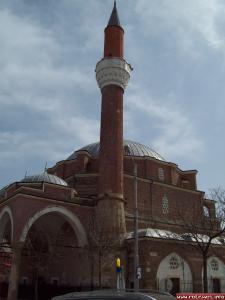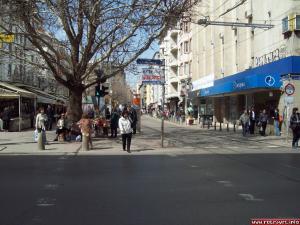Travel journal – Sofia
It is a long time since we were planning this escapade to Bulgarian capital, Sofia. Since we went in Ruse we had it on stand by list and now it came the time for it. As usually, it followed plans after plans, days and days browsing sites about Bulgarian trains, cities, places and so on.
After almost a week of day dreaming lately came the big day. As usually we went at our best friend called North station, we took the well known train going to Thessalonic that leaves at 12.24 Romanian capital, prepared to fly over the Danube. I remember we were so anxious looking at the platform clock that shown only 12.10.
The time was walking too slow comparing with our young boiling blood. Lately, after we blunted that clock hanged in our front, the porter whistled train’s departure to our happiness. Quaffing every landscape, every sound, every human face of Romanian, Bulgarians and I don’t know any other people that were traveling with that train, after tasting the last Romanian air on the Friendship Bridge that separates the two countries we saw somewhere afar the little Vienna, in free translation the Bulgarian city Ruse.
At 14.50 we should be there, but some technical problems made us to arrive with a couple of minutes later. But it wasn’t a problem because the train that had to get us to Sofia leaves from Ruse at 22.30. It was our choice because we wanted, on the one hand to make more interesting the travel seeing as many cities as it is possible, and on the other hand, to visit one friend that live there. We succeeded in both targets.
Our friend shown us other places that we hadn’t seen last time when we went there alone. We saw the ruins of the old roman fortress Sexaginta Prista situated on Danube’s shore and a mosque. Because it was almost dark we went in a little bar to have a Bulgarian bier before taking the train. After this we went again to the railway station. We bought tickets – from Ruse to Sofia costs 17 leva/person. Unfortunately we find out too late that if you buy a two way ticket you have a promotional price. We had in our front a night sleeping between the train noise and the uncomfortable train chairs.
We arrived to Sofia in the morning, around 6, being tired and sleepy. The train arrived a little bit later and our friend too and we had to wait for him in the railway hall. It was a huge communistic waiting room, wearing yet the soviet dusted stars. After some minutes that we don’t know how it passed because of the sleepy, all I remember it is that it was pretty cold J Lately our friend came and we followed one of that streets and we arrived at the blessed place: a warm house and a big bed. J After 2-3 sleeping hours we were as new. Our Bulgarian friend and his wife had the pleasure to guide as throw Sofia to show us the main objectives.
We took the bus to arrive in center and entered into the Borisova garden, a big and beautiful park. We cut the garden to arrive near Pancharevo (Панчарево). In our first day to Sofia we visited the surroundings including: Pancharevo Lake and Boyana church, letting the center for the next day.
The following day the Bulgarian hostess guides us through Sofia, this time in the city. We saw a lot of places: the ruins of Serdica fortress, the Banya Bashi Mosque, the Sofia’s synagogue, the Public mineral baths, Nevski cathedral, Vitosha Boulevard, the University, The Market Hall, the Saint George Church (Свети Георги).
We visited a lot in Sofia. This is that type of city that you can fill pages and pages about, but I don’t want to bore or to bust your happiness to discovery by your own.
If you are a Romanian that never visit Sofia you will ask me for sure: “Is it prettiest then Bucharest?”. I will answer “yes”, but the comparison is not just at all.
Sofia is an old city, with another history, another society, another evolution. On the cultural side it is better than Bucharest, but if you look at infrastructure, life style it is not the same think.
Summing up, you really must put Sofia on your travel list. 🙂


































































